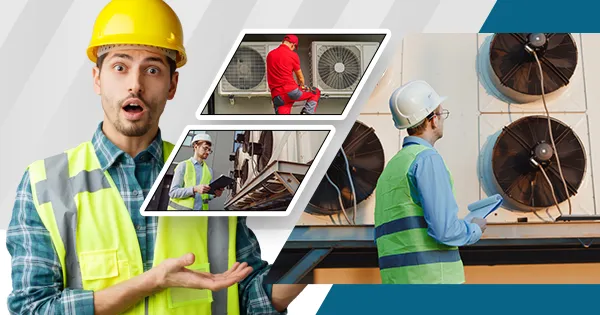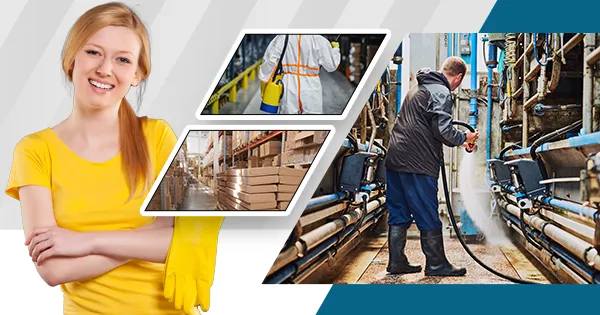Cleanliness is crucial in the restaurant industry for several reasons. First and foremost, it is important for the health and safety of both customers and employees. A clean restaurant helps prevent the spread of germs and bacteria, reducing the risk of foodborne illnesses. Additionally, cleanliness plays a significant role in customer satisfaction and business reputation. A dirty or unkempt restaurant can leave a negative impression on customers, leading to a decline in business. You need to start with identifying hard-to-reach areas in your restaurant.
Identifying Hard-to-Reach Areas in Your Restaurant
When it comes to cleaning a restaurant, there are certain areas that are often overlooked. These hard-to-reach areas can harbour dirt, dust, and bacteria if not properly cleaned. Some common areas that are often neglected include the tops of shelves and cabinets, behind equipment, under sinks, and in corners. It is important to pay attention to these areas during cleaning to ensure a thorough and effective job.
Cleaning hard-to-reach areas in your restaurant is crucial to prevent the spread of germs and bacteria. These areas can easily accumulate dirt and debris, which can then be transferred to other surfaces or food preparation areas. Regularly cleaning these areas will help maintain a clean and safe environment for both employees and customers.
The Importance of Proper Cleaning Techniques
Proper cleaning techniques are essential in maintaining a safe and clean environment in a restaurant. It is important to understand the difference between cleaning, sanitising, and disinfecting. Cleaning refers to the removal of visible dirt and debris from surfaces. Sanitising involves reducing the number of germs on surfaces to a safe level. Disinfecting goes a step further by killing germs on surfaces.
Using the correct cleaning techniques is crucial to ensure a safe and clean environment. This includes using appropriate cleaning solutions for different surfaces, following proper dilution ratios, and using the correct tools for each task. It is also important to follow the recommended contact time for cleaning solutions to ensure their effectiveness.
Choosing the Right Cleaning Tools and Products
Choosing the right cleaning tools and products is essential for maintaining cleanliness in a restaurant. Different surfaces require different cleaning tools and products to ensure effective cleaning. For example, microfiber cloths are ideal for cleaning surfaces as they are highly absorbent and can trap dirt and bacteria effectively. Additionally, using colour-coded cloths can help prevent cross-contamination.
When it comes to choosing cleaning products, it is important to consider their effectiveness and safety. Look for products that are specifically designed for use in the food service industry and have been approved by regulatory agencies. It is also important to consider the environmental impact of the products you choose. Opting for eco-friendly cleaning products can help reduce your restaurant’s carbon footprint.
Cleaning the Kitchen: Tips and Tricks
The kitchen is the heart of any restaurant and keeping it clean is of utmost importance. There are several best practices for cleaning the kitchen that should be followed. First, it is important to clean as you go. This means wiping down surfaces and equipment after each use to prevent the buildup of dirt and bacteria. Additionally, regular deep cleaning of kitchen equipment such as ovens, grills, and fryers is necessary to remove built-up grease and food particles.
When cleaning kitchen equipment and appliances, it is important to follow the manufacturer’s instructions. Use appropriate cleaning solutions and tools for each task. For example, stainless steel surfaces should be cleaned with a non-abrasive cleaner to avoid scratching the surface. It is also important to regularly clean and sanitise cutting boards, utensils, and other food preparation surfaces to prevent cross-contamination.
Cleaning the Dining Area: Best Practices
The dining area is where customers spend their time while dining at your restaurant, so it is important to keep it clean and inviting. Best practices for cleaning the dining area include regularly wiping down tables, chairs, and other surfaces with a disinfectant solution. Pay special attention to high-touch areas such as door handles, light switches, and menus.
In addition to regular cleaning, it is important to deep clean the dining area on a regular basis. This includes cleaning carpets, upholstery, and curtains to remove dirt and stains. It is also important to regularly clean and sanitise restrooms to maintain cleanliness and prevent the spread of germs.
Deep Cleaning: How Often Should You Do It?
Deep cleaning is an essential part of maintaining a clean and safe environment in a restaurant. It involves thorough cleaning of all areas, including hard-to-reach areas in your restaurant, that may not be cleaned during regular daily cleaning. Deep cleaning should be done on a regular basis, depending on the needs of your restaurant.
The frequency of deep cleaning will depend on factors such as the size of your restaurant, the number of customers you serve, and the type of food you prepare. As a general guideline, deep cleaning should be done at least once a month. However, certain areas may require more frequent deep cleaning, such as kitchen exhaust systems, which should be cleaned every three to six months.
Training Your Staff: The Importance of Consistent Cleaning Standards
Training your staff on proper cleaning techniques is crucial for maintaining consistent cleanliness in your restaurant. All employees should receive training on the importance of cleanliness and the proper procedures for cleaning different areas and surfaces. This includes understanding the difference between cleaning, sanitising, and disinfecting, as well as knowing which cleaning products and tools to use for each task.
Consistent cleaning standards are important to ensure that all areas of the restaurant are cleaned thoroughly and effectively. This includes following a set cleaning schedule and checklist to ensure that all tasks are completed. Regular training sessions should be conducted to reinforce proper cleaning techniques and address any issues or concerns.
Maintaining Cleanliness: Tips for Daily Maintenance
Maintaining cleanliness daily is essential for a restaurant. This includes implementing a daily cleaning schedule that outlines specific tasks to be completed each day. Some tips for daily maintenance include:
- Wiping down surfaces and equipment after each use.
- Sweeping and mopping floors regularly.
- Emptying trash bins and replacing liners as needed.
- Cleaning and sanitising restrooms throughout the day.
- Regularly checking and cleaning high-touch areas such as door handles and light switches.
Creating a cleaning schedule for your restaurant can help ensure that all tasks are completed on a regular basis. Assign specific tasks to different employees and establish a system for accountability.
What Are the Benefits of a Clean Restaurant?
Maintaining a clean restaurant has numerous benefits. First and foremost, it helps ensure the health and safety of both customers and employees. A clean restaurant reduces the risk of foodborne illnesses and creates a safe environment for everyone. Additionally, cleanliness plays a significant role in customer satisfaction and business reputation. A clean and well-maintained restaurant leaves a positive impression on customers, leading to repeat business and positive reviews.
In conclusion, cleanliness is crucial in the restaurant industry for several reasons. It is important to identify hard-to-reach areas in your restaurant and clean them regularly to prevent the spread of germs and bacteria. Proper cleaning techniques, including cleaning, sanitising, and disinfecting, should be followed to ensure a safe and clean environment. Choosing the right cleaning tools and products is essential for effective cleaning. Best practices for cleaning the kitchen and dining area should be followed, and deep cleaning should be done on a regular basis. Training staff on proper cleaning techniques and maintaining consistent cleaning standards are important for maintaining cleanliness in your restaurant. Finally, daily maintenance is crucial for ensuring a clean environment, and the benefits of a clean restaurant include improved customer satisfaction and business reputation.







